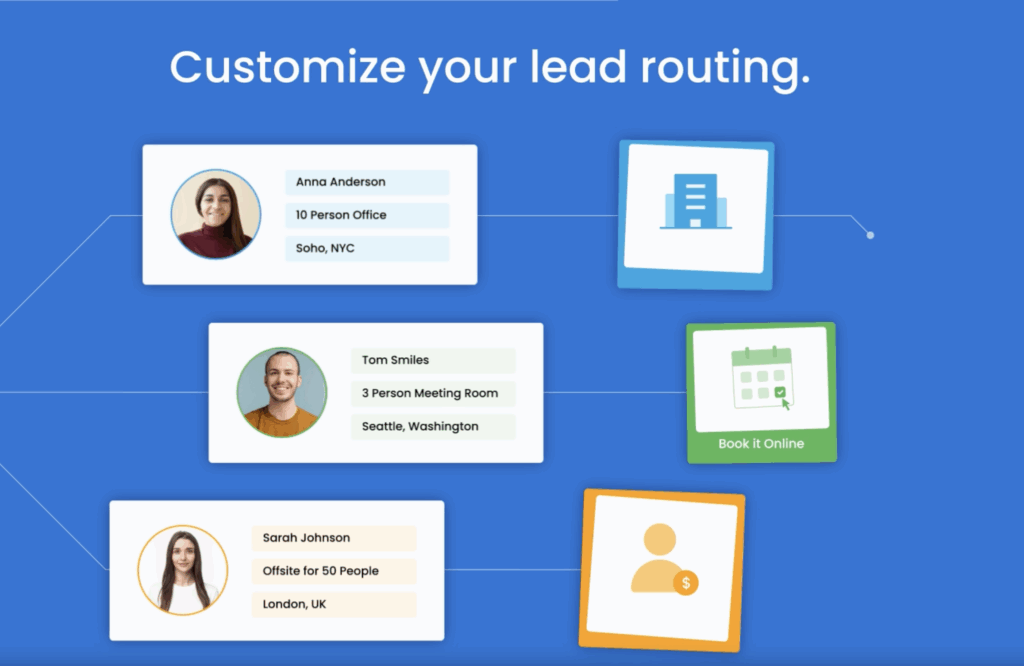Customers Can Now Easily Access Real-Time Pricing and Schedule Appointments Online for Gutter Cleaning Services By making the booking process easier and more transparent, we aim to enhance t...
Navigating AI Integration in Real Estate: A Case Study in Deployment of AI Leasing Agents




“Everybody wants to adopt AI, but nobody knows how to. If you show up at people’s doors and say, ‘I’m building for you,’ people are really receptive to solutions,” observes Francesco De Camilli, Co-Founder and CEO of Uniti AI. This sentiment captures the current paradox facing the real estate industry: eagerness to embrace artificial intelligence coupled with uncertainty about implementation.
The Promise and Reality Gap
The global AI market now exceeds $390 billion, with the real estate sector increasingly contributing to this figure. According to industry data, 75% of leading brokerages in the United States have already adopted some form of AI technology. Yet adoption doesn’t always translate to meaningful results.
“When AI became broadly accessible in 2023, it became evident that it would have a meaningful impact on commercial real estate, just as it would on every industry,” De Camilli explains. His observation reflects the moment when generative AI tools entered the mainstream, creating both excitement and questions about practical applications.
The promise is clear: Real estate organizations implementing machine learning have enhanced their Net Operating Income (NOI) by up to 10%. Meanwhile, platforms like Zillow have demonstrated AI’s potential for accuracy, with their AI-powered Zestimate improving its median error rate for on-market homes to below 2%.
Yet many firms struggle to move beyond experimentation to meaningful implementation. This gap between AI’s potential and its practical application represents one of the industry’s most significant challenges.
Finding the Right Entry Point


For real estate professionals, identifying where to begin with AI integration often presents the first hurdle. De Camilli suggests starting with repetitive workflows that exist across the industry.
“Leasing is a very repetitive workflow. It is a fairly similar workflow across all real estate businesses,” he notes. This standardization makes leasing an ideal candidate for AI enhancement, allowing for automation of routine tasks while freeing human agents to focus on relationship-building and complex negotiations.
Lead engagement represents another promising entry point. “In a competitive market with many choices, creating a solution that reduces engagement time with new leads to effectively zero captures significant interest,” De Camilli explains. The numbers support this approach, with AI-driven lead engagement improving response rates by 64% on average.
Beyond the Hype: Delivering Tangible ROI
The initial wave of AI enthusiasm has given way to more pragmatic considerations. “The narrative is that AI for AI’s sake no longer sells. You need to have a solution that delivers tangible ROI,” De Camilli observes.
This shift from novelty to necessity reflects the maturing AI landscape in real estate. Early adopters who implemented AI solutions primarily for marketing purposes are now being outpaced by organizations focusing on measurable outcomes.
“What we’re building is a better way to do something that people have always done, which is engage and close leads. If you build a better mousetrap using the newest technology to enable people to do that more efficiently, you win,” De Camilli states.
This focus on enhancing existing processes rather than reinventing them entirely offers a more accessible path to AI adoption. By improving efficiency in familiar workflows, companies can achieve measurable returns while minimizing disruption.
The Human-AI Partnership


Despite fears of job displacement, the most successful AI implementations in real estate augment rather than replace human expertise. De Camilli frames this relationship in organizational terms: “The way I would think about our agents is they’re just like employees.”
This perspective—viewing AI as a team member rather than a tool—helps organizations develop more effective integration strategies. Just as human employees have specific roles, strengths, and limitations, AI solutions perform best when deployed strategically within well-defined parameters.
The human-AI partnership proves particularly valuable in client-facing roles. While AI can handle initial inquiries, data analysis, and routine communications, human agents provide the emotional intelligence, negotiation skills, and market intuition that technology cannot replicate.
Scaling Beyond Initial Use Cases
Once organizations establish successful AI implementations in one area, expansion opportunities often emerge organically. “We’ve had clients asking us, more quickly than we expected, to find ways to enable them to use their agent for tasks beyond just leasing or inbound sales,” De Camilli shares.
This natural evolution from specific applications to broader implementation represents a healthy adoption pattern. Rather than attempting comprehensive transformation immediately, successful organizations start with well-defined use cases and expand based on demonstrated success.
For many firms, this expansion follows a predictable path: beginning with internal processes like document analysis, then moving to client-facing applications such as lead engagement, and eventually incorporating AI into core business functions like valuation and portfolio management.
Industry Readiness and Adaptation
The real estate industry’s people-centric nature actually positions it well for AI adoption. “Real estate is well set up to take advantage of AI because it’s a very people-dominated industry, and using AI to more effectively scale work that people do creates significant business profit,” De Camilli observes.
This perspective challenges the common assumption that traditional industries face greater barriers to technological adoption. In fact, sectors with high human involvement often have more to gain from AI augmentation than already-automated industries.
The Path Forward: Strategic Implementation
As the real estate industry continues navigating AI integration, several best practices have emerged:
- Start with specific, measurable use cases rather than attempting comprehensive transformation
- Focus on enhancing existing workflows instead of creating entirely new processes
- Measure outcomes rigorously to demonstrate ROI and build support for expanded implementation
- Involve frontline staff in selection and implementation to ensure solutions address actual needs
- Maintain a balance between automation and human expertise to preserve the relationship-driven nature of real estate
For industry leaders, the key question isn’t whether to implement AI but how to do so strategically. Those who successfully bridge the gap between AI’s promise and its practical application will gain significant competitive advantages in today’s technology-enhanced marketplace.
Similar Articles
Explore similar articles from Our Team of Experts.


Concierge Auctions: US$33 Million Beachfront Estate on Maui’s Coveted Southwest Coastline to Auction
4610 Makena Road, Wailea-Makena, Hawaii Rare beachfront trophy estate on Maui’s southwest coastline A private tropical haven with two gated entrances and private access Seamless indoor and...


The World’s Only Marine-Grade Hardwood Flooring Best Rated Hardwood Flooring 2022, 2023 & 2024 European Flooring is the leader in luxury hardwood flooring Industry experts share in...


Home Sellers at 580 Rosemary Lane in Tega Cay, SC, Find Success with Luxury Realtor Sally Awad CHARLOTTE, NC, UNITED STATES, July 3, 2024 /EINPresswire.com/ — Selling a home is more th...


Portfolio of Five High-Quality Assets Concentrated in Sunbelt and Midwest Markets Across our platform, we are finding opportunities where our strong relationships and local knowledge gives u...


